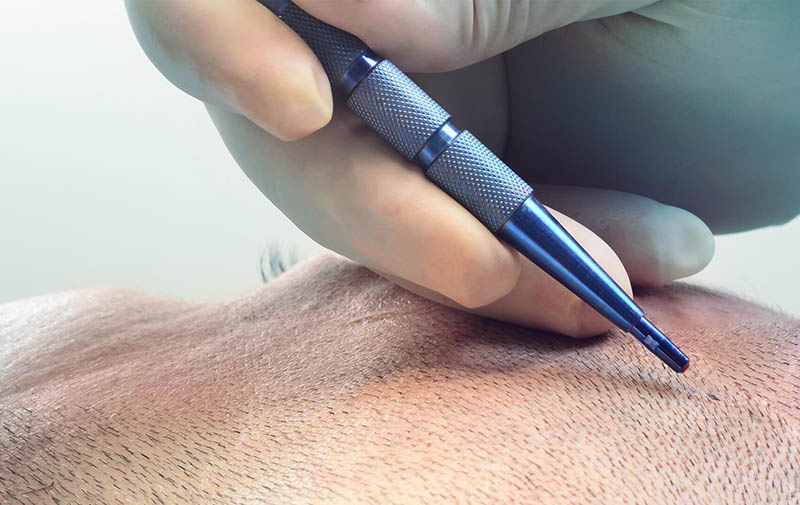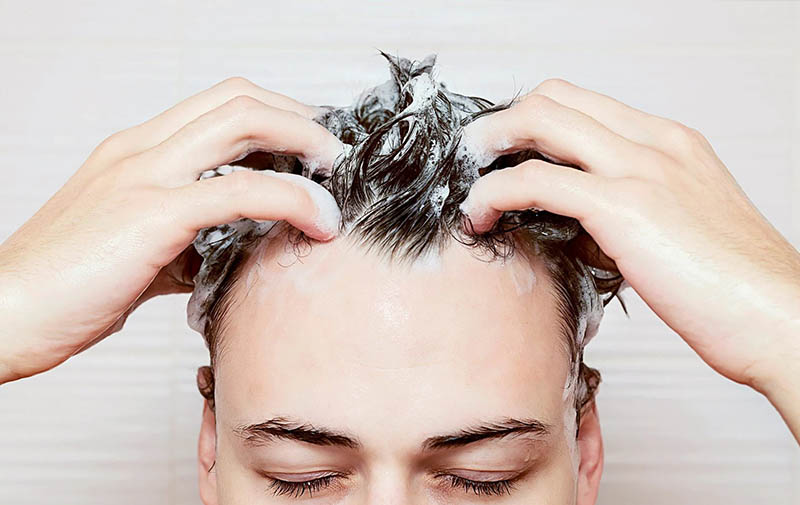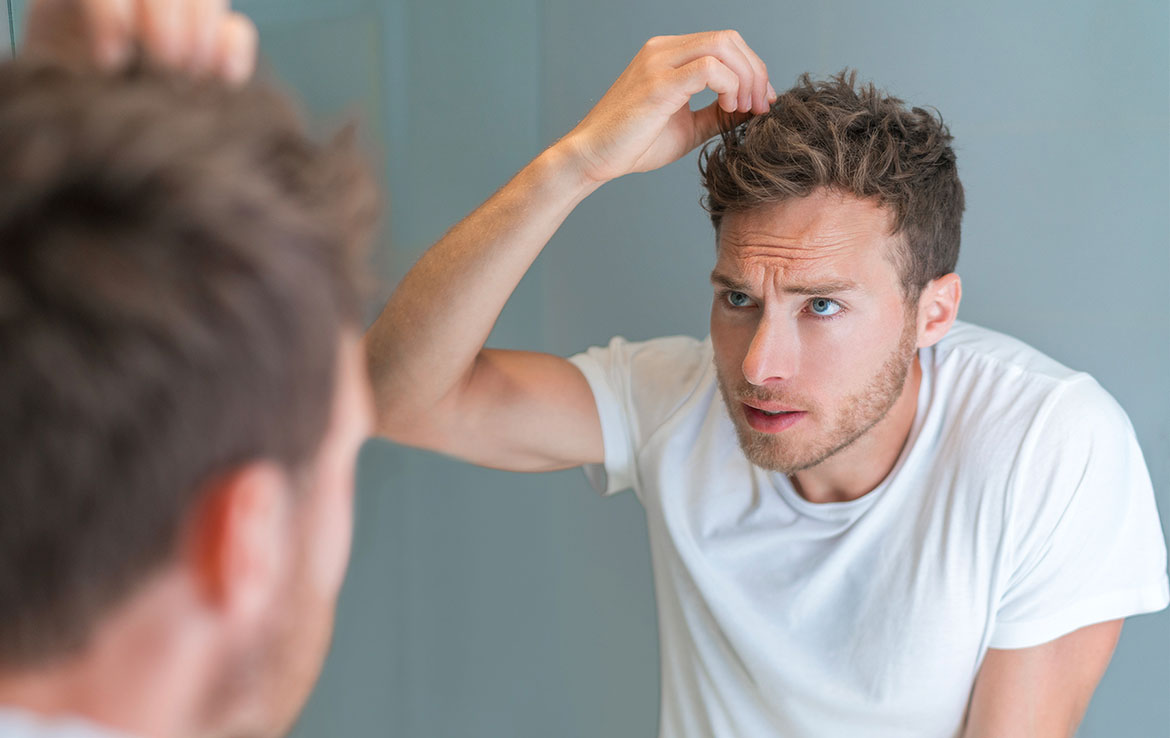
Microneedling, a cosmetic procedure renowned for addressing various signs of aging, is colloquially referred to as skin needling due to its capacity to boost collagen production in the skin.
The technique entails utilizing a skin roller embedded with small needles to induce minor skin injuries.
Although primarily employed as an anti-aging treatment for the skin, microneedling has also emerged as a potential remedy for hair loss. There is evidence suggesting its efficacy in addressing a specific form of hair loss known as alopecia areata.
The mechanism involves creating controlled injuries in the skin, hypothesized to stimulate the revitalization of hair follicles. This process is believed to lead to the promotion of new hair growth, and in cases such as androgenic alopecia or male pattern baldness, it may contribute to the thickening of thinning hair.
Benefits of Microneedling for Hair Loss
Initially recognized for its efficacy in scar treatment in the 1990s, microneedling has since been investigated as a potential standalone or complementary approach to addressing androgenic alopecia and alopecia areata.
In addition to its established role in enhancing collagen production for treating acne scars, microneedling is believed to stimulate stem cells within the hair follicles, potentially contributing to hair growth.
Furthermore, microneedling is thought to facilitate the absorption of hair loss treatment products, including:
- Minoxidil
- Topical steroids
- Platelet-rich plasma
A specific study delved into the potential advantages of combining microneedling with a topical corticosteroid for the treatment of alopecia areata.
How the Microneedling Works
In microneedling, a healthcare provider utilizes a handheld device equipped with needles, the sizes of which can range from less than 1 millimeter to a few millimeters. Commonly referred to as a roller, this device is systematically moved across the targeted treatment area, generating minor injuries.
There is speculation that microneedling might trigger the release of factors promoting hair growth or directly stimulate hair growth in response to the induced micro-injuries.
To enhance comfort, your healthcare provider typically administers a topical anesthetic to your scalp approximately 45 minutes before the procedure.
The duration of the actual procedure may vary depending on the size of the treatment area but generally takes less than 10 minutes. Following the completion of scalp microneedling, your healthcare provider may apply a topical balm or perform an injection based on the specific goals of the microneedling session.

Side Effects of Microneedling on the Scalp
Microneedling may result in the following side effects on the scalp:
- Bruising
- Oozing from the wounds
- Redness
- Swelling
- Pain
Additionally, there is a potential risk of scarring from the wounds caused by the needles. The treated area might exhibit redness and inflammation for a few days post-procedure, with most side effects typically diminishing within 5 days, according to the American Academy of Dermatology (AAD).
Before opting for this treatment, it is advisable to consult with your healthcare provider, especially if you have a history of acne or eczema, conditions affecting healing (such as diabetes), or if you are on blood thinners or other medications. Microneedling is not recommended for pregnant women.
Using minoxidil immediately after microneedling may enhance medication absorption, leading to increased burning, itching, and irritation on the scalp. It is crucial to discuss with your healthcare provider when to resume topical minoxidil after treatment.
Post-treatment, the scalp may be more sensitive to the sun, necessitating daily sunscreen use. Wearing a hat outdoors can provide additional protection.
There is also a risk of infection with microneedling on the scalp, despite the small needle size. Following aftercare instructions diligently, including keeping the area clean and using prescribed topical or oral antibiotics, is essential to prevent infection. Individuals with serious health conditions or a history of frequent infections may face an increased risk of infection.
Dermaroller Treatment At-Home
In an attempt to cut costs and save time, some individuals opt to purchase dermarollers for self-administered microneedling treatments at home.
According to Dermapen, a company in this industry, at-home sessions can be as cost-effective as one-third of the expenses associated with professional microneedling services.
However, there are notable drawbacks to at-home dermaroller treatments, including:
- Uncertainty about the appropriate needle size to use
- Difficulty in reaching certain areas of the scalp, such as the back of the head
- Challenges in targeting specific areas as effectively as a professional
- Lack of expertise in proper roller usage
- Lack of knowledge about when to conclude the treatment
- Lack of understanding of the correct pressure and rolling techniques
- Absence of adjunct treatments, such as platelet-rich plasma, that professionals use to enhance results.
These factors may result in less effective treatments compared to those administered by a professional. Licensed microneedling professionals possess the expertise to help minimize side effects and address any complications that may arise during treatment. Attempting to assess risks and manage complications independently can be challenging, potentially leading to the need for professional intervention if side effects develop.
While the prospect of purchasing a dermaroller for personal use may be tempting, dermatologists strongly discourage at-home microneedling or seeking services from inadequately trained providers for hair loss treatment. For safety and optimal results, it is advisable to entrust these devices to licensed and experienced professionals.
The Cost of Microneedling for Hair Loss
The out-of-pocket expenses for microneedling typically vary, with each session costing approximately $200 to $700. The cost per session tends to increase with the size of the treatment area.
Medical insurance generally does not cover microneedling since it is classified as a cosmetic treatment. However, there is a possibility that your insurance may cover some of the costs if the procedure is performed for medical reasons.
Selecting a Clinic for Microneedling
Licensed professionals specializing in skincare, such as dermatologists and cosmetic surgeons, typically perform microneedling procedures.
Despite microneedling being a non-surgical procedure with generally lower associated risks, it is advisable to seek out an experienced and well-trained professional to minimize potential complications, including the risk of scarring.
Upon identifying several potential providers, it is recommended to request consultations with each. This allows you to gauge their experience and obtain an estimate of the treatment costs.
A credible microneedling provider will often showcase a portfolio of their previous
Microneedling presents a promising avenue for hair loss treatment, especially in the case of androgenic alopecia, and may serve as a beneficial addition to existing treatment regimens for individuals with the financial means to explore this option.
Engage in a discussion with your healthcare provider to thoroughly explore the array of available options for promoting hair growth, including microneedling. Additionally, consider seeking guidance from reputable clinics such as Medical 11 Clinic in Istanbul to ensure informed and personalized recommendations for your unique needs.





